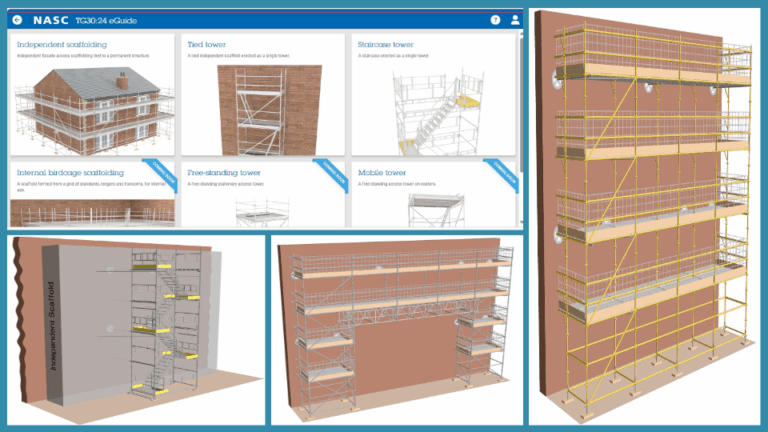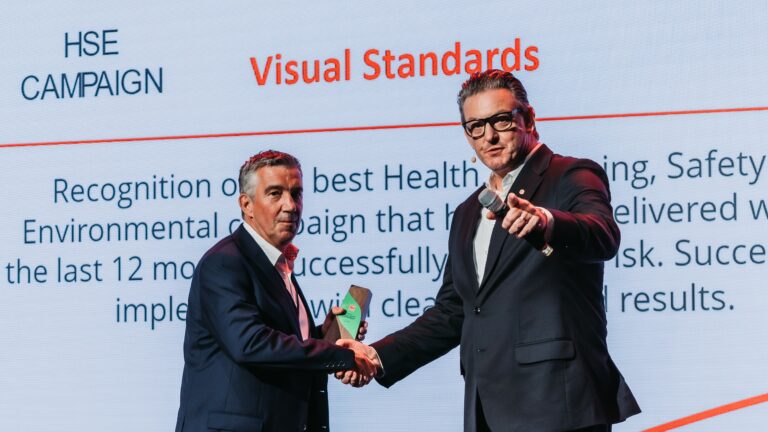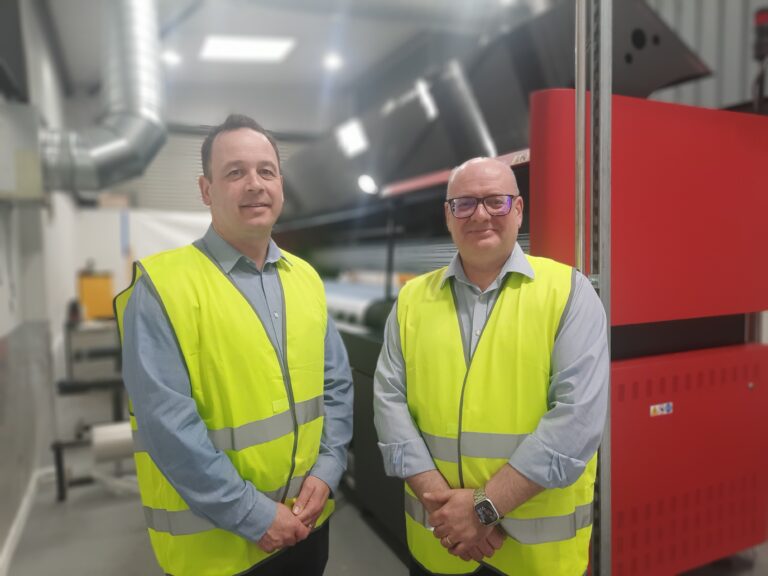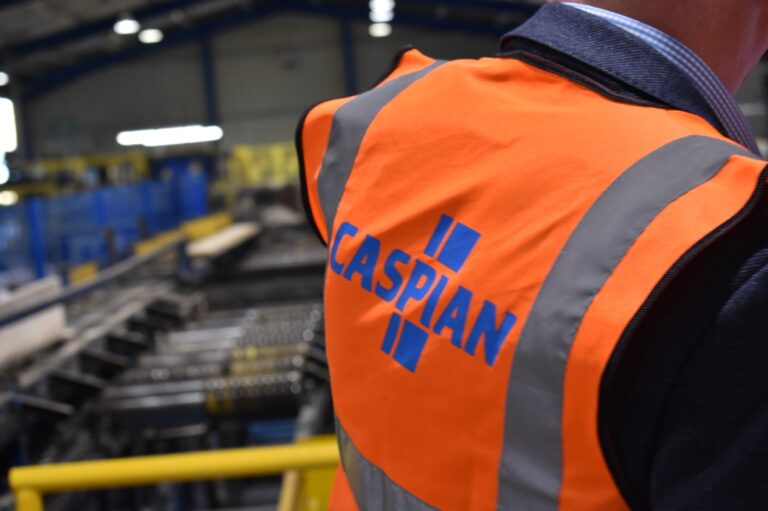 Mr Smith added: “If it makes even one person stop and think, it’s worth every bit of effort.”
The company plans to expand the campaign across the majority of its scaffolds situated in high-traffic areas over the coming weeks and is encouraging other firms in the industry to get involved.
“Let’s build futures, not fear,” Mr Smith said. “Manchester, let’s make a change.”
Mr Smith added: “If it makes even one person stop and think, it’s worth every bit of effort.”
The company plans to expand the campaign across the majority of its scaffolds situated in high-traffic areas over the coming weeks and is encouraging other firms in the industry to get involved.
“Let’s build futures, not fear,” Mr Smith said. “Manchester, let’s make a change.” Manchester Scaffolding Firm Launches Knife Crime Awareness Campaign
 Mr Smith added: “If it makes even one person stop and think, it’s worth every bit of effort.”
The company plans to expand the campaign across the majority of its scaffolds situated in high-traffic areas over the coming weeks and is encouraging other firms in the industry to get involved.
“Let’s build futures, not fear,” Mr Smith said. “Manchester, let’s make a change.”
Mr Smith added: “If it makes even one person stop and think, it’s worth every bit of effort.”
The company plans to expand the campaign across the majority of its scaffolds situated in high-traffic areas over the coming weeks and is encouraging other firms in the industry to get involved.
“Let’s build futures, not fear,” Mr Smith said. “Manchester, let’s make a change.” Sky Scaffolding Midlands Ltd Elevates Repairs on Historic Warwick Bridge with Layher Allround System
Innovation in Action
The project’s standout feature is a 20-metre-long suspended scaffold platform over the arch of the bridge, supported by high-load aluminium beams cantilevered 8 metres from each bank.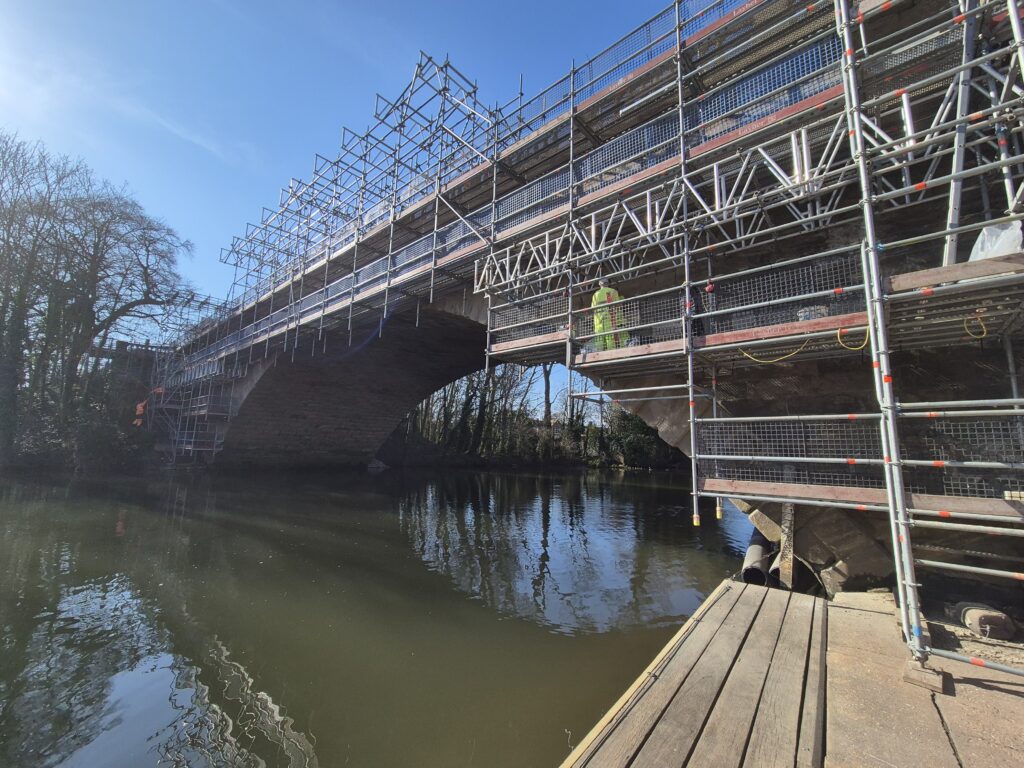 With just 1.8 metres of usable space on the footpath for the scaffold base—and no encroachment allowed onto the road—counterbalance became a key challenge.
To solve this, Sky deployed 20 tonnes of specially purchased flat steel ballast, chosen for its high density. This approach allowed maximum counterweight performance within minimal space. The ballast was positioned with precision to achieve structural stability by maximising the lever arm of the cantilever—demonstrating the level of innovation required to work within tight spatial constraints.
The scaffold itself was constructed using the world-renowned Layher Allround system, which provided the flexibility, load capacity, and efficiency required for such a complex structure. The system’s modularity enabled a custom configuration tailored to the bridge’s historic form.
Crucially, the scaffold’s engineering and safety design was carried out by SDC Scaffold Design Consultants Ltd, who worked closely with Sky to deliver a scheme that met both structural demands and heritage preservation requirements.
With just 1.8 metres of usable space on the footpath for the scaffold base—and no encroachment allowed onto the road—counterbalance became a key challenge.
To solve this, Sky deployed 20 tonnes of specially purchased flat steel ballast, chosen for its high density. This approach allowed maximum counterweight performance within minimal space. The ballast was positioned with precision to achieve structural stability by maximising the lever arm of the cantilever—demonstrating the level of innovation required to work within tight spatial constraints.
The scaffold itself was constructed using the world-renowned Layher Allround system, which provided the flexibility, load capacity, and efficiency required for such a complex structure. The system’s modularity enabled a custom configuration tailored to the bridge’s historic form.
Crucially, the scaffold’s engineering and safety design was carried out by SDC Scaffold Design Consultants Ltd, who worked closely with Sky to deliver a scheme that met both structural demands and heritage preservation requirements.
Partnership and Public Safety
Throughout the project, Sky Scaffolding Midlands Ltd collaborated with local authorities, conservation experts, the principal contractor, and stonemasons to maintain the bridge’s integrity and public access.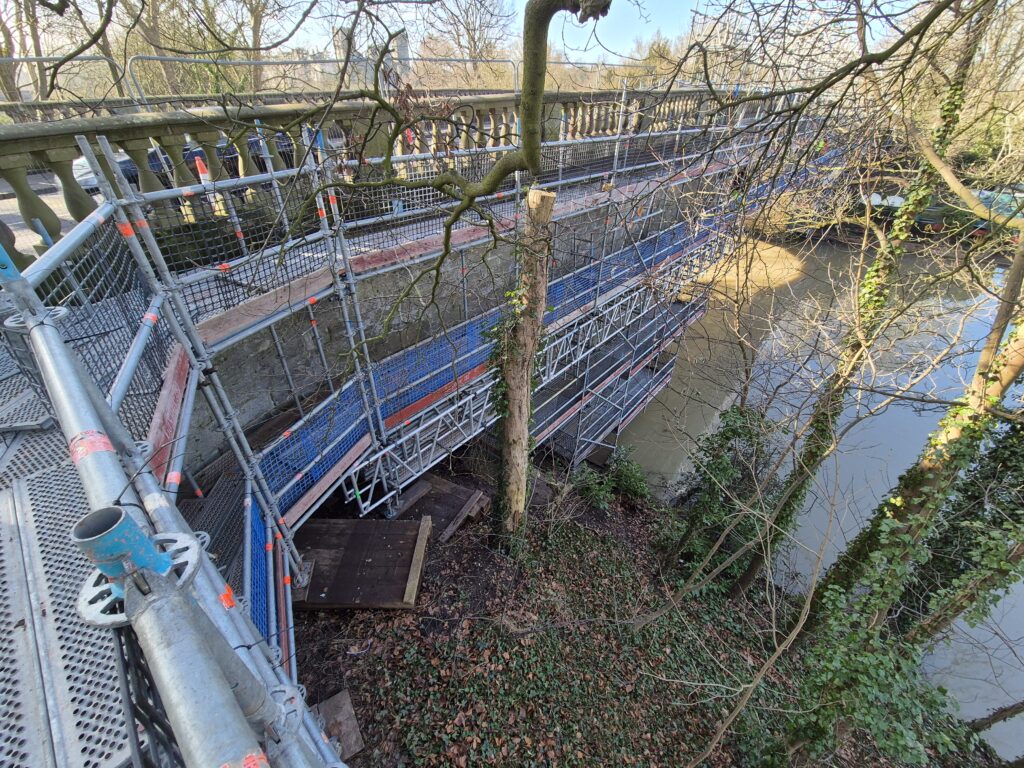 Pedestrian safety was a top priority, with segregated walkways, protective barriers, and clearly marked signage in place. Night-time road closures were used for scaffold installation and maintenance to avoid daytime traffic disruption.
“This was one of the most technically demanding scaffolds we’ve delivered,” said a spokesperson from Sky Scaffolding Midlands Ltd. “The combination of the Layher Allround system and the expertise of SDC Scaffold Design Consultants Ltd made it possible to deliver a solution that balances heritage protection with public convenience.”
The restoration works are expected to conclude in Spring 2025. By maintaining full use of the bridge while supporting intricate repair work, the project has already been hailed as a model of engineering excellence and cross-disciplinary collaboration.
Pedestrian safety was a top priority, with segregated walkways, protective barriers, and clearly marked signage in place. Night-time road closures were used for scaffold installation and maintenance to avoid daytime traffic disruption.
“This was one of the most technically demanding scaffolds we’ve delivered,” said a spokesperson from Sky Scaffolding Midlands Ltd. “The combination of the Layher Allround system and the expertise of SDC Scaffold Design Consultants Ltd made it possible to deliver a solution that balances heritage protection with public convenience.”
The restoration works are expected to conclude in Spring 2025. By maintaining full use of the bridge while supporting intricate repair work, the project has already been hailed as a model of engineering excellence and cross-disciplinary collaboration. NASC Launches Second Phase of TG30 Scaffolding Guidance
“A Game-Changer”
Clive Dickin, Chief Executive of NASC, said the latest update represented a significant advancement for the sector. “Tied towers have had a proven efficiency and safety improvement, which has resulted in their recognition as the preferred access system for scaffolding,” he said. “This new capability within TG20 and the major enhancement of TG30 for phase two will be a game-changer. This continues NASC’s tireless work to build inclusivity into everything we do, with quality guidance at its core.” TG30 phase two remains free of charge to current ePortal subscribers and forms part of a broader, scheduled roll-out, with further manufacturer updates planned throughout the year. Mr Dickin also praised the efforts of those involved in delivering the project. “It’s important we recognise the hard work of all involved in getting this release out on time and to budget,” he said. “It has taken a huge effort from all concerned, including the committee and the technical team.”Raising Standards Across the Industry
The TG30 guidance, developed in collaboration with leading scaffolding system manufacturers, provides contractors with standardised compliance sheets and operational guidelines, helping to simplify project planning and ensure safety standards are met. Phase two’s release is expected to support a growing move towards tied tower scaffolding as a preferred access method, with the NASC aiming to strengthen best practices across the industry. Further updates to TG30 are expected later this year, as the NASC continues to expand its support for both system and traditional scaffolding methods.TRAD UK Scoops Top Health and Safety Honour at Altrad President’s Awards
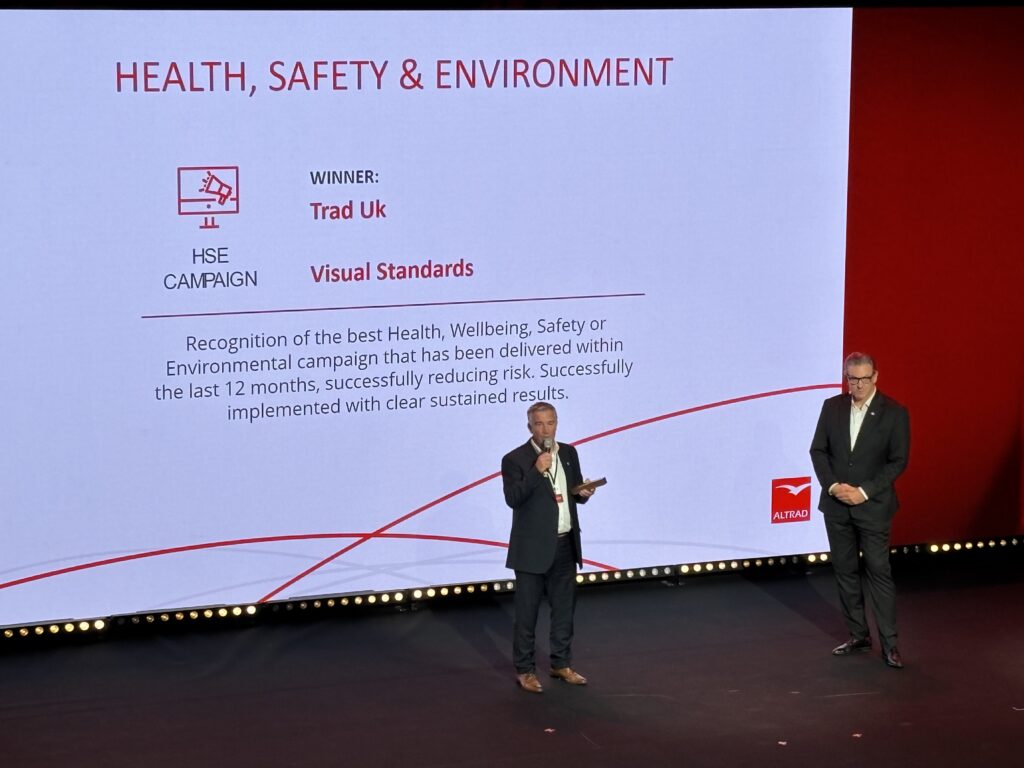 “We’ve listened to our people, and their input has help shape this entire project.” said Nick. “Our objective was to introduce a simple way of communicating good practices and what better way is there to show ‘what good looks like’ than through pictures. Simple, effective communication and engagement with the workforce is key to changing behaviours, which is paramount to a safe and risk free working environment.”
The campaign builds on TRAD UK’s broader efforts to promote safety within its business and wider operations, including developing the TRAD Operative Training Scheme (TOTS), and the introduction of the Personal Engagement Programme (PEP), while achieving FORS accreditation at all of its depots. The company has also reported over one million man-hours without a reportable accident and no lost time injury incidents since May 2022.
The booklets have been widely welcomed across the workforce, with positive feedback from operatives, yard managers and drivers alike. The Transport edition, completed in early 2025, includes QR codes linking to further resources from TRAD UK, Altrad, the HSE and industry bodies.
TRAD UK’s campaign also earned the 2024 FASET Health, Safety and Environmental Achievement Award, highlighting its impact into the broader construction and access sector.
“We’ve listened to our people, and their input has help shape this entire project.” said Nick. “Our objective was to introduce a simple way of communicating good practices and what better way is there to show ‘what good looks like’ than through pictures. Simple, effective communication and engagement with the workforce is key to changing behaviours, which is paramount to a safe and risk free working environment.”
The campaign builds on TRAD UK’s broader efforts to promote safety within its business and wider operations, including developing the TRAD Operative Training Scheme (TOTS), and the introduction of the Personal Engagement Programme (PEP), while achieving FORS accreditation at all of its depots. The company has also reported over one million man-hours without a reportable accident and no lost time injury incidents since May 2022.
The booklets have been widely welcomed across the workforce, with positive feedback from operatives, yard managers and drivers alike. The Transport edition, completed in early 2025, includes QR codes linking to further resources from TRAD UK, Altrad, the HSE and industry bodies.
TRAD UK’s campaign also earned the 2024 FASET Health, Safety and Environmental Achievement Award, highlighting its impact into the broader construction and access sector. Yorkshire firm boosts production with major investment in digital printing
Industrial Textiles and Plastics (ITP) Ltd, a Yorkshire-based manufacturer specialising in protective textiles for the construction sector, has announced a major investment to expand its production capacity.
The Easingwold company has installed a new state-of-the-art large-format digital printer, a move it says will enhance the quality and efficiency of its printed scaffold sheeting and temporary containment products.
ITP said the investment, which forms part of a wider plan to upgrade its infrastructure and resources, will allow it to meet growing demand for high-resolution, wide-format printing across a range of construction applications.
“We have experienced growing demand for extra-large logos, high-impact visuals, and intricate detailing, particularly for full-scale façade reproductions on historic building refurbishments,” said Carl Morse, Managing Director of ITP.
“The addition of another digital printer at our factory will enable us to further develop our offering for applications such as scaffold sheeting, vented sheeting, PVC banners, air mesh banners, and keder sheeting.”
As well as installing the new printer, ITP has carried out factory refurbishments and upgraded its flexographic printing facilities. It has also committed to additional training and the recruitment of extra resources as part of its growth strategy.
The firm’s Sales Director, Matt Thompson, said the enhanced capability would help meet the rising demand for certified flame-retardant products.
“Reliable fire protection is critical in the construction industry,” he said. “Our printed sheeting is third-party certified to meet flame retardancy standards for both external and internal use, helping contractors to comply with regulations on major projects.”
Founded in North Yorkshire, ITP manufactures a broad range of temporary site protection products, including debris netting, filter sheeting, insulated sheeting and acoustic barriers. It also produces a variety of construction membranes designed for building envelope protection, such as breather membranes, vapour control layers, and roofing underlays.
The company supplies its products globally through a growing export division, with an expanding presence in multiple international markets.
Lee Marley Scaffolders to Scale UK’s Highest Peaks in Charity Challenge
Sheffield scaffolding firm secures £250,000 boost to fuel Yorkshire expansion
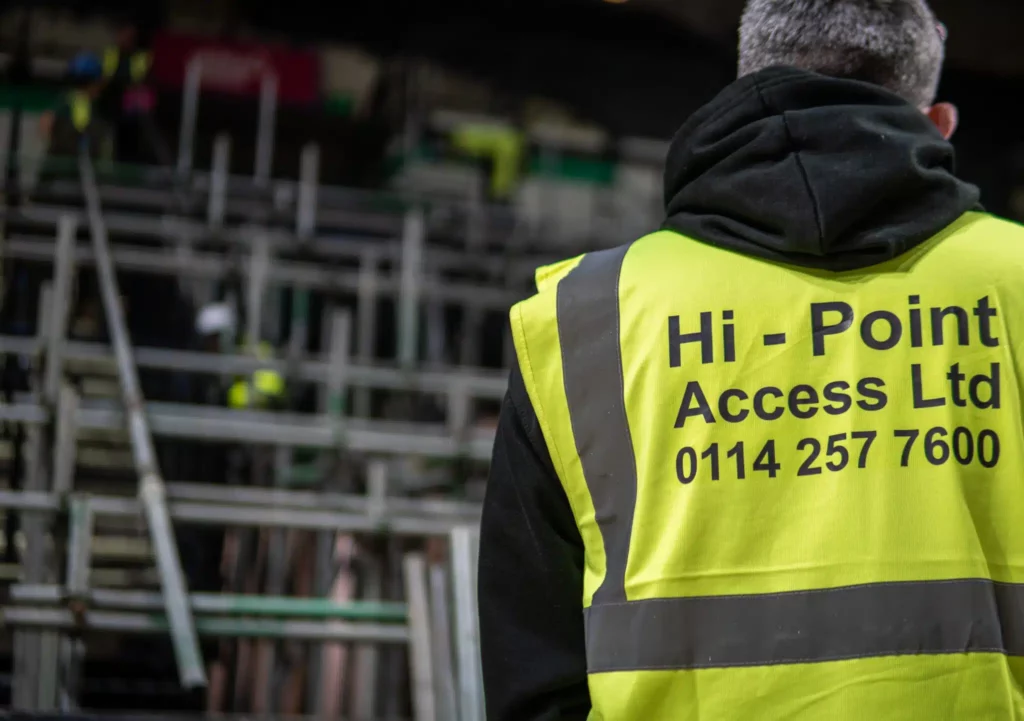 The acquisition also marks an exit for Gap’s founder, Steve Griffiths, who launched the business in 2003. The seven-strong team will remain in place at the Barnsley site.
Andy Tyas of Mercia Debt praised the company’s progress under its new leadership: “Hi-Point is an established business that has had a new lease of life under the second generation of family members. Over the past few years, they have expanded the range of services and increased turnover, and the acquisition of Gap is another milestone. We are pleased to provide the funding they need to continue their growth journey.”
Lizzy Upton, senior investment manager at the British Business Bank, which oversees the Northern Powerhouse Investment Fund, said supporting companies like Hi-Point is central to the fund’s mission.
“Hi-Point’s extensive reach across a number of key venues and institutions makes it integral to our region’s vibrant cultural economy,” she said. “It’s good to see NPIF II backing a thriving, family-run business that’s expanding across Yorkshire.”
Hi-Point was advised on the deal by Harry Bushell of Hentons Corporate Finance in Sheffield. The introduction to Mercia was made by Kate Darbyshire of Lloyds Bank.
The acquisition also marks an exit for Gap’s founder, Steve Griffiths, who launched the business in 2003. The seven-strong team will remain in place at the Barnsley site.
Andy Tyas of Mercia Debt praised the company’s progress under its new leadership: “Hi-Point is an established business that has had a new lease of life under the second generation of family members. Over the past few years, they have expanded the range of services and increased turnover, and the acquisition of Gap is another milestone. We are pleased to provide the funding they need to continue their growth journey.”
Lizzy Upton, senior investment manager at the British Business Bank, which oversees the Northern Powerhouse Investment Fund, said supporting companies like Hi-Point is central to the fund’s mission.
“Hi-Point’s extensive reach across a number of key venues and institutions makes it integral to our region’s vibrant cultural economy,” she said. “It’s good to see NPIF II backing a thriving, family-run business that’s expanding across Yorkshire.”
Hi-Point was advised on the deal by Harry Bushell of Hentons Corporate Finance in Sheffield. The introduction to Mercia was made by Kate Darbyshire of Lloyds Bank. Scaffolding Association Urges Industry-Wide Unity Amid Renewed Scrutiny
Scaffolding Collapses Onto Van in North London
Caspian Marks 40 Years of Excellence in the UK Scaffold Industry
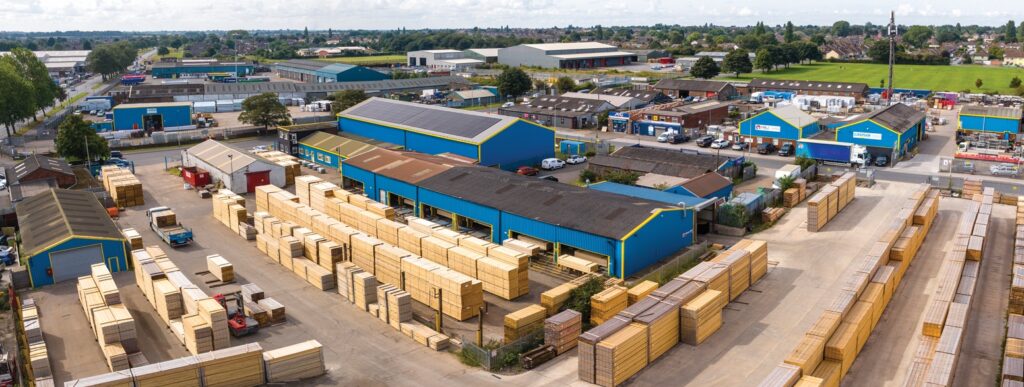 As a family-rooted enterprise, the business has remained grounded in values of trust and integrity. Managing Director Neil Garrison said the firm’s longevity is down to its customer-first ethos and a focus on building lasting relationships.
Industry clients have praised the company for its consistent product quality and a personable approach that has helped cement its status as a reliable partner in the sector.
Looking ahead, Caspian Group Ltd says it remains focused on innovation and expanding its reach, while continuing to support the evolving needs of its customers.
As a family-rooted enterprise, the business has remained grounded in values of trust and integrity. Managing Director Neil Garrison said the firm’s longevity is down to its customer-first ethos and a focus on building lasting relationships.
Industry clients have praised the company for its consistent product quality and a personable approach that has helped cement its status as a reliable partner in the sector.
Looking ahead, Caspian Group Ltd says it remains focused on innovation and expanding its reach, while continuing to support the evolving needs of its customers. 

